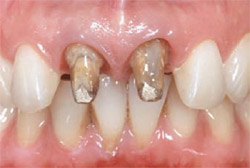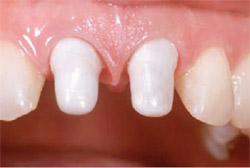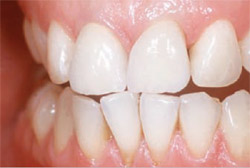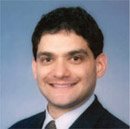Nine Questions: A Systematic Approach to Material Selection
Martin R. Mendelson
Deciding which materials are best suited for the patients in your practice can be a confusing task at best. Practice philosophy, the demographics of the practice location, and the comfort level of the dentist in adapting new materials into practice are all factors that can influence material choice. This can be further complicated by the esthetic-driven patient who is “dental shopping” for specific materials they have seen on makeover shows and other media.
However, there is one important commonality among all of the products on the market today: no one material represents a one-size-fits-all solution. If we accept this and know that there are a myriad of materials to choose from in dentistry, then a systematic approach to all of our cases can make the job of material choice much simpler. This will also help in discussions with patients who have self diagnosed and decided which material they would like before their appointments.
QUESTION ONE
Is This an Anterior or a Posterior Restoration?
This may be a simple question, but it is a confusing topic. There are several materials that are contraindicated for use in the anterior because they do not provide an acceptable esthetic outcome. Conversely, there are materials that provide an excellent esthetic outcome but demonstrate insufficient load resistance for use in the posterior region. These latter materials may be acceptable for use in a single-unit restoration but not for a multiple-unit restoration. There are several materials that are highly esthetic and will allow multi-unit posterior restorations only to the second premolar. Additionally, there are some materials that are indicated for the anterior region but cannot mask dark dentin or metal posts.
QUESTION TWO
Is the Primary Concern Functional or Esthetic?
Of the patients who require restorations in the anterior region, the majority desire their restorations to be pleasing to the eye. This may entail simply matching the surrounding dentition or reconstructing the entire esthetic zone. Certain materials cannot be used because of their lack of esthetic and/or functional properties. Some patients may be just as particular with the esthetics of a second molar as they are with an upper central incisor. In our zeal to please the esthetically demanding patient we cannot forget that these materials need to function over the long term. For example, if the patient is a heavy bruxer, a material that has a greater functional capacity and can withstand additional functional stress over time may be needed.
QUESTION THREE
For Bridges, What is the Total Mesial/Distal Length of the Span?
Material choice for multi-unit restorations is often measured in terms of how many units are contained in the bridge. A more accurate approach is to measure the total mesial/distal span length. This length is what determines a material’s ability to function under load without failure. If this length is violated, the risk of failure as a result of fracture greatly increases. This is especially true in the posterior region, where a greater amount of vertical force is exerted. A related concern arises in the anterior region when all-ceramic materials are being considered. These materials require a greater connector dimension than traditional porcelain-fused-to-metal (PFM) restorations. The occlusal/gingival height and buccal/lingual width of the connectors need to be of sufficient bulk to withstand the occlusal forces. Additionally, the esthetics of the case may be compromised. The restoration will appear bulky and may lack individualization between each unit to accommodate the required dimension for the material.
QUESTION FOUR
Is There Any Evidence of Occlusal Wear or Parafunctional Activity?
There is no question that enamel is far superior to any restorative material that can be placed in the mouth today. Therefore, if the patient has worn his or her natural dentition, then he or she possesses the ability to wear and or fracture many restorative materials on the market. It is imperative to conduct a complete examination of the occlusion and treat the condition accordingly. The inclusion of occlusal guards in treatment plans has become increasingly common, but there is no guarantee that the patient will be compliant and wear his or her guard. Many materials are absolutely contraindicated in the presence of parafunctional activity and should not be used if there is evidence of occlusal wear and/or other parafunctional activity.
QUESTION FIVE
Will the Restorations Oppose Natural Dentition or Will They Oppose Another Restorative Material?
This question has become increasingly important in the era of esthetic dentistry. Many practices are now amalgam-free and their patients have one or more posterior direct composite restoration. Historically, we have been concerned about the wear of the natural dentition that opposes porcelain restorations. However, our porcelain systems today are much kinder to the natural dentition and have similar wear rates to natural enamel. Instead, a current concern should be the wear of a composite restoration that opposes a porcelain restoration. Another situation to be avoided is the galvanic action of metal restorations of dissimilar composition in the same mouth.
QUESTION SIX
Are There Any Restrictions Regarding the Finish Line?
All restorative materials require a minimum depth of preparation to allow space for the material(s). These preparation requirements permit the proper conveyance of anatomy, occlusion, emergence profile, shade, and vitality. Some all-ceramic restorations require a shoulder margin of at least 1.5 mm in depth. This may not be the best choice if the finish line will be on the root surface. There are other metal and nonmetal choices available, which are highly esthetic and do not require as aggressive of a preparation.
QUESTION SEVEN
Are the Margins Supragingival or Subgingival?
Subgingival margins can be difficult to isolate and maintain adequate fluid control. This can be a difficult task not only during the impression-making process, but also during the insertion appointment. Placement of restorations fall into three categories: materials that can only be bonded into place, materials that can only be cemented into place, and materials that can be bonded or cemented. There are many situations in which it would be advantageous to cement the restoration vs bond it into place. Medically compromised patients on blood thinning medications are one example. Supragingival margin placement can also avoid postinsertion recession as a result of gingival retraction during the impression-making and bonding processes.
QUESTION EIGHT
Are There Any Discolorations or Metals That Need to be Masked?
Some all-ceramic materials are made to mimic the natural esthetics of tooth structure. Their final shade is a result of light passing through the enamel into the dentin and back out through both of these structures. Therefore, these materials will not perform in the way they were intended if a tooth has dentin discoloration, a metal-containing restoration, or an all-metal post and core. In these situations, there are other materials to choose from. Some have opaque copings and others can be opaqued on the underside of the porcelain within the restoration.
QUESTION NINE
What Does the Patient Want?
Understanding what the patient wants is of prime importance in this day of want-based dentistry. Patients do not think like dental professionals and in most cases cannot envision the final result without our assistance. Effective communication through conversation, pictures, diagnostic wax-ups, and/or wearing provisional restorations for a period of time are all essential to ensure that the final restoration provided is what the patient had in mind at the outset of treatment. If there are functional or esthetic issues that will prohibit the end result, it is our duty to make the patient understand the limitations of his or her situation.
POTENTIAL CASE
The following case demonstrates the use of the nine questions as a guide through the treatment planning process.
Age: 32-year-old woman (Figure 1)
Chief Complaint: “I want crowns without metal.”
Previous Medical History: Nonsignificant
Previous Dental History: Recurrent caries; PFM teeth Nos. 8 and 9; root canal therapy, metal post and cores teeth Nos. 8 and 9; no significant periodontal concerns; no parafunctional habits
Questions
- Is this an anterior or a posterior restoration? Anterior
- Is the primary concern functional or esthetic? Esthetic
- For bridges, what is the total mesial/distal length of the span? Not applicable
- Are there any occlusal or parafunctional concerns? No
- Will the restorations oppose natural dentition or will they oppose another restorative material? Natural dentition
- Are there any restrictions regarding the finish line? No
- Are the margins supragingival or subgingival? Subgingival
- Are there any discolorations or metal that need to be masked? Yes
- What does the patient want? An esthetic and nonmetal restoration
Determination
By using the nine guidelines, the dentist chose Procera® (Nobel Biocare, Yorba Linda, CA) restorations in this case (Figure 2 and Figure 3), although there are other materials that would have met and/or exceeded the criteria.
Avanté™ Feldspathic Porcelain (Pentron Clinical, Wallingford, CT): No.
This material requires more axial reduction, a heavy chamfer or shoulder prep, and must be bonded.
Captek™ (Precious Chemical Company, Altamonte Springs, FL): Yes.
This material masks metal, is highly esthetic, and can be cemented into place.
CEREC® inLab (Sirona Dental Systems, Charlotte, NC): Yes.
This material masks metal, is highly esthetic and can be cemented into place.
Empress® Eris (Ivoclar Vivadent, Amherst, NY): No.
This material requires more axial reduction, a heavy chamfer or shoulder preparation, and must be bonded.
Empress® Esthetic (Ivoclar Vivadent): No.
This material is unable to mask dark dentin or metal.
Procera (Nobel Biocare): Yes.
This material masks metal, is highly esthetic, and can be cemented into place.
Traditional PFM Restoration: Yes.
This material masks metal and can be cemented into place.
Wol-Ceram® (Wolz Dental-Technik, Ludwigshafen, Germany): Yes.
This material masks metal, is highly esthetic, and can be cemented into place.
CONCLUSION
Although some of the nine questions require a simple answer, they build on each other to help include certain materials and preclude others. It is the author’s recommendation that these nine questions be used in the treatment planning phase of any restorative case. Most dental laboratories work with different materials and know the limitations of each material. It is always wise to consult your technician because he or she has the experience of knowing which material may be applicable in different situations. The failure of new materials is not necessarily the fault of the materials themselves but is often the misapplication of the material or a result of not following the manufacturer’s protocol. This stepwise approach may be useful to you in the selection of new materials to determine if they have a place in your practice.
 |  | ||||||
| Figure 1 Prepared teeth; note the dark dentin, metal restorations, and slightly subgingival margins. | Figure 2 Procera copings seated on the abutments. Note the complete opacification of the dark dentin and metal posts. | ||||||
 | |||||||
| Figure 3 The final result. | |||||||
| |||||||




